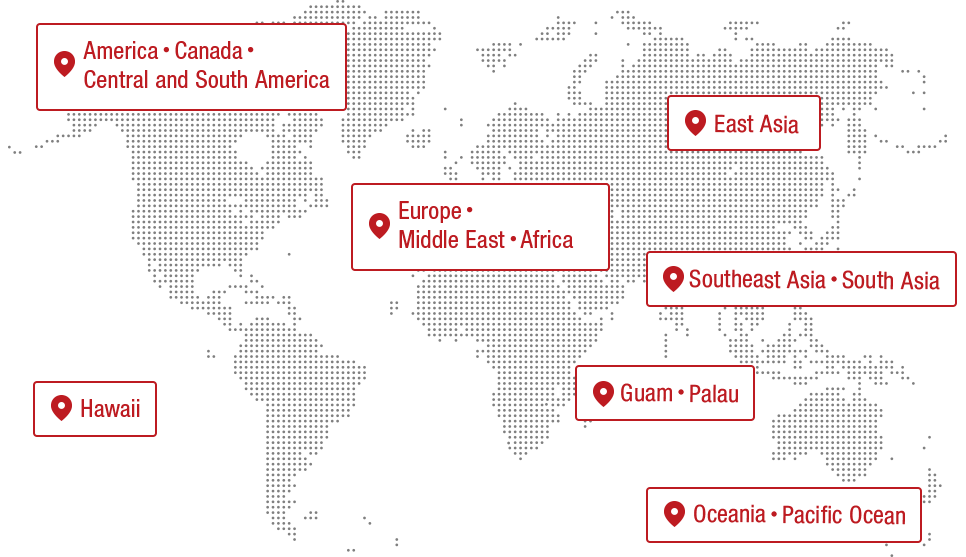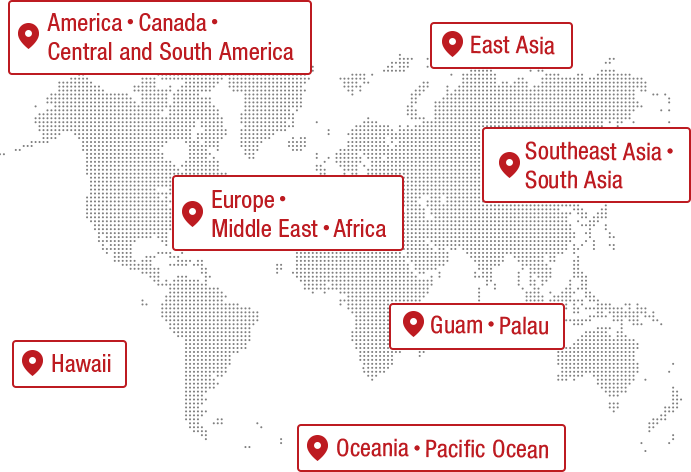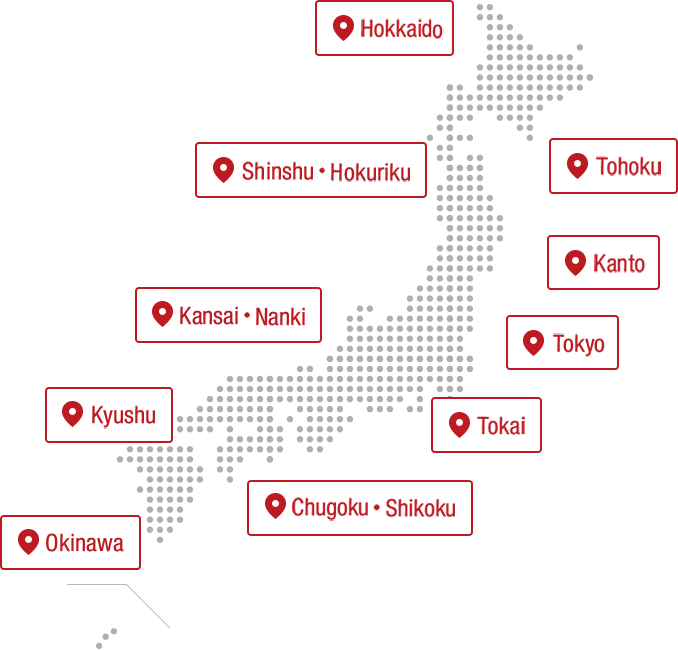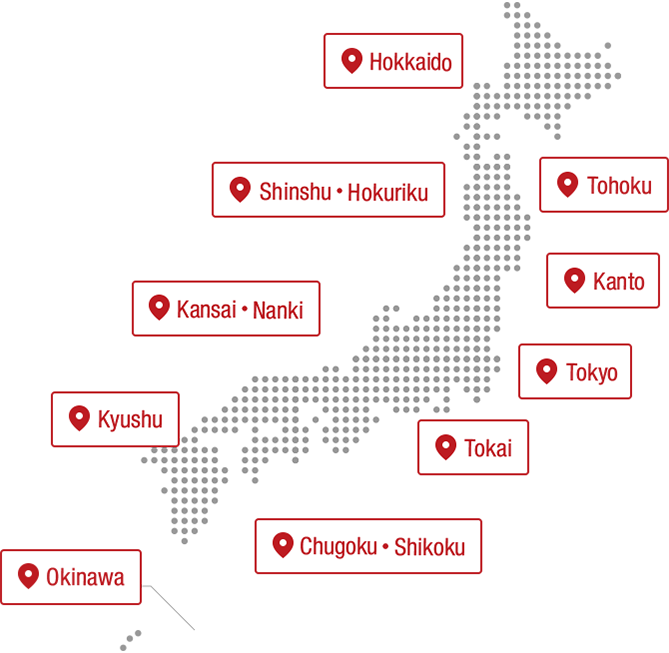
INDEX
- Follow in the footsteps of Kunio Yanagita at the Tono Monogatari Museum
- You might encounter the red monster of Tono legend at "Kappabuchi"
- If you want to set up a work base in Tono, try "Commons Space"
- Auberge "Tonoya Kaname" where you can enjoy the true pleasure of fermented foods in a course meal
- A visit to Tono Furusato Village is sure to bring you a sense of peace
- "Gondohare" in the dazzling Tono. A unique workcation
Tono City in Iwate Prefecture once flourished as a castle town, and is a place that still retains the atmosphere of a good old rural village in the mountains. When I visited the Satoyama area on business from Tokyo, the air, combined with the misty air, felt cool and comfortable.

It is said that Kunio Yanagita, who visited this area in 1909, came into contact with the local folklore and decided to write "The Tales of Tono". Since then, many aspiring scholars have retraced the route while also conducting fieldwork. Perhaps this was similar to the idea of workation, which combines work and tourism.
Follow in the footsteps of Kunio Yanagita at the Tono Monogatari Museum
One of the best places to follow in his footsteps is the Tono Monogatari Museum in the center of Tono city. The Folktale Warehouse, an exhibition facility themed on the folklore of Tono, features a line-up of fun exhibits themed on nostalgic folk tales such as The Crane's Return and Kachikachi Mountain.

A must-see is the former Takazen Ryokan, which was Yanagita's regular lodging during his lifetime and still stands today. In addition to Yanagita, Orikuchi Shinobu and Nevsky stayed in the guest rooms on the second floor, and the inn was used as a base for folklore research.

The house in Seijo, Setagaya Ward where he spent his later years has been relocated to the premises, and his study and other buildings are on display just as they were at the time.

In addition, three times a day, a storyteller will recite a folk tale. The story begins with the opening line, "Once upon a time, there was a man called Mugashi Choja Don..." and tells the story of the "Zashiki-warashi" (a spirit that lives in the house), a legend in Tono. Takahashi Nobu's narration is soft and gentle in the Iwate dialect. His narration is gentle and heartwarming, and you can't help but listen to it.
The House of Tales
| address | : | 2-11 Chuo-dori, Tono City, Iwate Prefecture |
|---|---|---|
| phone | : | 0198-62-7887 |
| business hours | : | 9:00-17:00 (entrance accepted until 16:30) |
| Closed Day | : | Open all year round |
| Fee | : | Adults: 510 yen, High school students and younger: 210 yen |
You might encounter the red monster of Tono legend at "Kappabuchi"

It is said that red kappa live in Tono. There is an object like this in the rotary in front of the station, but if you have time, why not head over to Kappa-buchi, where you are said to encounter a kappa?

The murmuring of the river in the thick brush lets sunlight filter through the trees here and there, and the only sound you can hear is the sound of the river echoing in the silence. It's mysterious because it makes you feel like maybe a kappa might show up.
Kappa-buchi
| address | : | Tsuchibuchicho, Tono City, Iwate Prefecture |
|---|
If you want to set up a work base in Tono, try "Commons Space"
One of the benefits of workcation is that you can freely set your work base, but if you want a desk where you can work comfortably, you might want to use the "Commons Space." One-time use costs 500 yen per hour. If you're staying for a long time and want to visit multiple times, you can use it as much as you like for 3,000 yen per month.

"We welcome locals, people who have relocated here, and people on a short-term workation. Wi-Fi, projectors, monitors, and other amenities are available, and there are free drinks. We have a bean shop that roasts its own coffee, so you can have them make you some. We also have tableware made by Mashiko artists, and they will cook for you. If we don't have a reservation, you can also use the room next door or the second floor."

This was explained to us by Community Manager Nana Terui. The interior, which has a calm yet sophisticated atmosphere, was designed and planned by an architect living in Mashiko, Tochigi Prefecture.

"I perform Kagura dance, and many of the users are interested in that. We aim to be deeply involved in the local community, so we would be happy if a variety of people could learn about the charms of the region and the various activities it offers. Tono is large, and there are many interesting places not only in the center but also in the surrounding villages. When you see them, you can get a sense of why 'The Tales of Tono' were created. A day or two would be just regular sightseeing, so we would like people to stay for a longer period, such as for workcations. I think you will be able to experience the fear and wonder of nature."
Commons Space (rental space/coworking space)
| address | : | 5-32 Chuo-dori, Tono City, Iwate Prefecture |
|---|---|---|
| phone | : | 0198-68-3544 |
| business hours | : | 10:00-17:00 (inquiry reception hours) |
| web | : | https://note.com/tsukuru_univ/n/na3932511859d |
Auberge "Tonoya Kaname" where you can enjoy the true pleasure of fermented foods in a course meal
Even though it was a business trip, it was still a trip. It's good to enjoy it at your own pace. I visited the auberge "Tonoya Kaname" near the center of Tono.

Known as an auberge that is difficult to book, this inn only accepts one group per day. The accommodation area that can be used freely is spacious and includes two bedrooms, a Western-style room and a Japanese-style room, and the loft on the second floor can also be used as a living room.

As I finished up the work I'd brought with me to my room, I found myself feeling excited because a wonderful dining experience was waiting for me. The restaurant was reserved for dinner time, and I could enjoy an interesting approach to fermented foods.

The aperitif is the classic "Imo Sala." Homemade miso is simmered with potatoes, and inside is homemade Indian cheese paneer and crunchy sanshozuke pickled burdock, daikon, and other ingredients in soy sauce and green onions. Adding a spice called ajwain gives it an oriental feel. It's the first dish with a fun contrast.

Next up is local onions and homemade Nanbu wheat gluten that was kneaded that morning. It is topped with bouillabaisse sauce and is very rich. The gluten is crispy on the outside and sticky on the inside. It is accompanied by steamed onions that retain a crunchy texture. It is a perfect combination of softness and freshness.

Next up is our homemade straw fermented soybean sformato. It matches perfectly with the filling made from our homemade pickled plums. The subtle sourness comes from the "Tenjin-sama" (heavenly god) wrapped in a pickled plum seed, which is quite literally a hidden seed. It is paired with our refreshingly dry homemade doburoku sake. Fermented foods and brewed alcohol go well together, bringing out the tang in the mild sformato.

At first glance, the tomato soup looks like white wine. By straining the concentrated tomato extract, it becomes a clear soup full of flavor. Homemade vinegar is the secret ingredient. The soft and smooth fresh soup has a pure finish without any unpleasant flavors, easily overturning the common perception of soup.

A complete change of pace, we have sashimi of rockfish caught in Sanriku. The back is grilled and frosted, while the belly is left raw. The meat has a springy texture and sweet fat. It is topped with homemade, long-aged dried mullet roe that was prepared in 2011. The rich flavor and subtle saltiness bring out the brilliance of the light sashimi.

The Japanese dishes continue. Inside the chawanmushi is a sushi with pork marinade. The strong acidity and rich flavor burst forth, the bitterness of the grill spreads, and the mellow egg neutralizes it. The pairing with the doburoku "Mizumoto", which has been aged for three years to acquire its richness, is an interesting clash of individual personalities.

Isaki sashimi. Apparently, it was a bold cooking method to soak the sashimi in the sake that was used to remove the salt when making mullet roe in 2009. It has a unique taste like salty rum, and it is surprising how the strong umami of the mullet roe is firmly carried over to the mild Isaki.

The grilled dish is the rare "sea eel" that only lives in the sea. It is simply grilled with salt. The firm flesh and the gorgeous fat that seems to overflow from it will make you squirm. The jelly is also delicately seasoned, yet full of strength.

This gorgeous dish is grilled eggplant topped with a generous amount of local summer vegetables. Cucumber, myoga, currant, lemon balm. The cream of potato brings out the unique flavor of the vegetables, giving it a refreshing taste. I was impressed that the palate cleanser was Western food.

Next up is wild game, with locally caught venison grilled over straw. It's a combination that competes with the rustic flavor of the wild jelly underneath the meat. The pairing is white, of all things. It's an orange wine made in Friuli, Italy. The rich flavor, which is also brewed from the skins and seeds, captures the dynamism of the meat dish.

Hittsumi, a local dish known as Iwate Suiton, is arranged in a lasagna style. The medicinal tomato sauce contains Houttuynia cordata and mugwort. The Japanese herbs add a surprising accent. The secret ingredient in the sauce is sea urchin, which makes it rich and delicate. Although it is near the end of the course, you will be so impressed that you will want a second helping.

The dessert was a steamed cake called "Ganzuki" filled with lots of nuts and walnuts. It had a crispy surface and a hint of sweetness with the richness of miso. The popsicle was made with yuzu and foie gras (!). It was full of sense and humor. It was served with Kumamoto Japanese black tea.
A refined Japanese breakfast is delicious and thought-provoking
The next morning, I was surprised to find my stomach growling even though I had eaten so much the night before, as if to say, "What will the food be like from now on?" In stark contrast to the rich, genre-bending lineup from the night before, a proper Japanese breakfast appeared.

First, we had a salad of cucumber and bracken, which was simple yet surprisingly flavorful, and I was completely awakened by it.
The rice is "Tono Ichigo", pesticide-free rice, cooked in a pot. It is accompanied by an assortment of local vegetables, cauliflower, moonflower (the ingredient used to make kanpyo), donko shiitake mushrooms, butterbur, and miso made with smelt. The highlight of the meal is the pickled scallops. They are grilled just right on the outside, and the inside is sticky and creamy.
Freshly caught this morning, grilled bell peppers are simply seasoned with bonito flakes and soy sauce. The flavor is strong even down to the seeds, and they are juicy. You can feel their powerful vitality. Dried overnight rock trout are firm, as you would expect from a seasonal fish, but also well-fattened, and have a sinful presence that makes them perfect for rice. In addition, miso soup made with Sanriku krill and wild mitsuba (Japanese parsley) seems to seep into your every last fiber.
Deeply moving "delicious" dishes created by a chef from Tono
"The miso we use at home is made by fermenting miso used to pickle vegetables, and it has been made to retain the flavors of various vegetables. Traditional miso uses a generous amount of salt. It may seem salty, but you can adjust the amount used when cooking."

So says the owner, Yotaro Sasaki. His cooking philosophy is full of surprises. Sasaki's "delicious food" is also reflected in his approach that questions common sense. For example, he overturns the common perception that "newly harvested rice is the best."
"Tono Ichigo is aged rice. The culture of considering new rice delicious is not even 100 years old. Today, delicious rice means rice that is sweet and has a high sugar content. Thanks to advances in breeding, rice today has been thoroughly fertilized to store up sugar, so it certainly tastes good, but it oxidizes and quickly loses flavor. However, old rice has less flavor, so letting it sit over the winter makes it taste better. Our rice is not fertilized and is thin, but it's healthy. It's delicious old-fashioned rice that becomes tastier the more it sits."
However, this type of rice is not widely available.So he decided to grow it himself, and has been doing so for 20 years without using any pesticides.Insects and birds that had left have returned, and herbs and wild strawberries are now growing naturally.

"My idea of what is delicious may be a little different. I think deliciousness comes from complexity, from having elements that you can think about while eating. A dish that simply increases the main components of umami is simply 'delicious.' But the sensation of 'delicious' is rich in complex flavors. That's what I'm aiming for."
"Delicious" includes not only the taste but also the aroma, depth, and story. Aroma is also an element of taste, and the carefully prepared vinegar has a salty taste. The spirit of inquiry into food, which even feels modest, is also reflected in the design of the space. In Tono, he thought there was no need to decorate it as flashy as a restaurant in an urban area.

"Virtues that are connected to a high level of spirituality are important, and there is no need to imitate big cities. For example, I think the beauty of northern countries in terms of space is their darkness. I realized this about seven years ago when a chef in Kyoto pointed it out to me. Being natural is also something to be proud of."

While it could be described with flowery words like "it's hard to get a reservation" and "an approach never seen before," Tonoya Kaname offers deeply moving food in a relaxed atmosphere and a truly relaxing and enriching experience.
Tonoya Kaname
| address | : | 2-17 Zaimokucho, Tono City, Iwate Prefecture |
|---|---|---|
| phone | : | 0198-62-7557 |
| web | : | http://tonoya-yo.com |
A visit to Tono Furusato Village is sure to bring you a sense of peace
What kind of place is Tono, the place that nurtured traditions and food culture? Tono Furusato Village is the perfect place to get a glimpse of it.

Even if it is not the familiar scenery from childhood, the Satoyama scenery that deeply moves the viewer's heart remains here. The gently sloping rice paddy roads and fields, old thatched houses in the distance, livestock grazing peacefully beside them. All you can hear is the murmuring of the river and the turning of the waterwheel. What an exquisite location.

You can also see the "Maburito (guardians)" who protect the culture and traditions of Tono. At "Tono Furusato Village," you can experience farming and experience the nature and simple human kindness of Tono.

It's fun to just drop in and work in a space far removed from your everyday life. There are raised floors in old houses all over the place. You might get some inspiration that wouldn't have come to you in the office or at home.
Tono Furusato Village
| address | : | 5-89-1, Uematsuke Umaushi, Uematsuke-machi, Tono City, Iwate Prefecture |
|---|---|---|
| phone | : | 0198-64-2300 |
| business hours | : | March to October 9:00 to 17:00 (entrance is accepted until 16:00) November to February 9:00 to 16:00 (entrance is accepted until 15:00) |
| Closed Day | : | Wednesday |
| Fee | : | Adults: 550 yen, Elementary, Junior High and High School Students: 330 yen |
| web | : | http://www.tono-furusato.jp |
"Gondohare" in the dazzling Tono. A unique workcation
The reason why Kunio Yanagita was fascinated by the place and gave this chef, who has built a first-class career, such a great realization is because the place called Tono is special. I can't help but think so. The breadth of Satoyama exceeds our imagination. There is no doubt that Kunio Yanagita was passionate about this place because he was moved by it every time he came into contact with it.

With these thoughts in mind, this workcation trip ended with a "gondohare." In the dialect that Takahashi-san taught me as he told me old stories, the word "gondohare" means "the end," as in "brushing off the straw (gondo) from your clothes to finish work." It was here that I said goodbye to Tono, but I felt a reluctance to leave.
Why not take your work with you and travel to your faraway hometown? You will surely find a simple, unique and rich experience that has remained unchanged since ancient times.
*Some content was revised on November 22, 2021.
Related article
- Take a relaxing trip to enjoy the aromas. Workcation in Yame City, Fukuoka Prefecture
- Experience island life by experiencing nature, history, and people.
- Play and learn in the great outdoors! A memorable family workcation at the foot of Mount Aso
- A journey full of encounters on a World Heritage island. Nagasaki "Shinkamigoto Town Workcation Experience Tour"
- Experience your first workcation in Nanki Shirahama. A trip that will enrich your work and play experience
- Resort atmosphere? Local experience? Choose a workcation in Miyazaki based on how you want to spend your time
- Introducing a new style of travel experience in Shima City, Mie Prefecture, a treasure trove of food and nature
- With so many options to choose from, you can enjoy a long-term stay. Workcation in Asahikawa in winter
- A new journey is a new way of life. The benefits of workation, combining work and rest
Click here to apply for JAL Pack Workcation
JAL Pack proposes Workation as a new work and travel style that allows you to "work while traveling."
The contents published are accurate at the time of publication and are subject to change.












